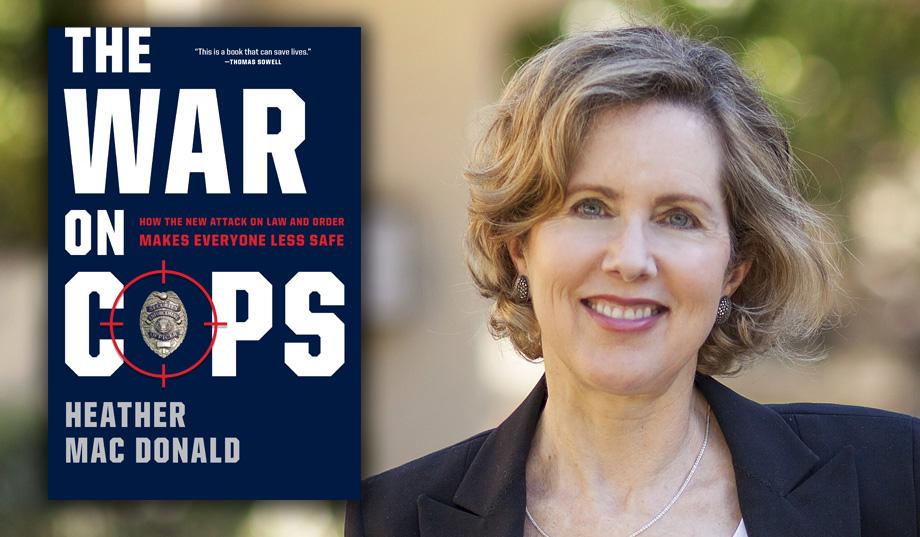The movement has won over Hillary Clinton and Bernie Sanders. But what if its claims are fiction?
A television ad for Hillary Clinton’s presidential campaign now airing in South Carolina shows the candidate declaring that “too many encounters with law enforcement end tragically.” She later adds: “We have to face up to the hard truth of injustice and systemic racism.”
Her Democratic presidential rival, Bernie Sanders, met with the Rev. Al Sharpton on Wednesday. Mr. Sanders then tweeted that “As President, let me be very clear that no one will fight harder to end racism and reform our broken criminal justice system than I will.” And he appeared on the TV talk show “The View” saying, “It is not acceptable to see unarmed people being shot by police officers.”
Apparently the Black Lives Matter movement has convinced Democrats and progressives that there is an epidemic of racist white police officers killing young black men. Such rhetoric is going to heat up as Mrs. Clinton and Mr. Sanders court minority voters before the Feb. 27 South Carolina primary.
But what if the Black Lives Matter movement is based on fiction? Not just the fictional account of the 2014 police shooting of Michael Brown in Ferguson, Mo., but the utter misrepresentation of police shootings generally.
To judge from Black Lives Matter protesters and their media and political allies, you would think that killer cops pose the biggest threat to young black men today. But this perception, like almost everything else that many people think they know about fatal police shootings, is wrong.
The Washington Post has been gathering data on fatal police shootings over the past year and a half to correct acknowledged deficiencies in federal tallies. The emerging data should open many eyes.
For starters, fatal police shootings make up a much larger proportion of white and Hispanic homicide deaths than black homicide deaths. According to the Post database, in 2015 officers killed 662 whites and Hispanics, and 258 blacks. (The overwhelming majority of all those police-shooting victims were attacking the officer, often with a gun.) Using the 2014 homicide numbers as an approximation of 2015’s, those 662 white and Hispanic victims of police shootings would make up 12% of all white and Hispanic homicide deaths. That is three times the proportion of black deaths that result from police shootings.
The lower proportion of black deaths due to police shootings can be attributed to the lamentable black-on-black homicide rate. There were 6,095 black homicide deaths in 2014—the most recent year for which such data are available—compared with 5,397 homicide deaths for whites and Hispanics combined. Almost all of those black homicide victims had black killers.
Police officers—of all races—are also disproportionately endangered by black assailants. Over the past decade, according to FBI data, 40% of cop killers have been black. Officers are killed by blacks at a rate 2.5 times higher than the rate at which blacks are killed by police.
Some may find evidence of police bias in the fact that blacks make up 26% of the police-shooting victims, compared with their 13% representation in the national population. But as residents of poor black neighborhoods know too well, violent crimes are disproportionately committed by blacks. According to the Bureau of Justice Statistics, blacks were charged with 62% of all robberies, 57% of murders and 45% of assaults in the 75 largest U.S. counties in 2009, though they made up roughly 15% of the population there.
Such a concentration of criminal violence in minority communities means that officers will be disproportionately confronting armed and often resisting suspects in those communities, raising officers’ own risk of using lethal force.
The Black Lives Matter movement claims that white officers are especially prone to shooting innocent blacks due to racial bias, but this too is a myth. A March 2015 Justice Department report on the Philadelphia Police Department found that black and Hispanic officers were much more likely than white officers to shoot blacks based on “threat misperception”—that is, the mistaken belief that a civilian is armed.
A 2015 study by University of Pennsylvania criminologist Greg Ridgeway, formerly acting director of the National Institute of Justice, found that, at a crime scene where gunfire is involved, black officers in the New York City Police Department were 3.3 times more likely to discharge their weapons than other officers at the scene.
The Black Lives Matter movement has been stunningly successful in changing the subject from the realities of violent crime. The world knows the name of Michael Brown but not Tyshawn Lee, a 9-year-old black child lured into an alley and killed by gang members in Chicago last fall. Tyshawn was one of dozens of black children gunned down in America last year. The Baltimore Sun reported on Jan. 1: “Blood was shed in Baltimore at an unprecedented pace in 2015, with mostly young, black men shot to death in a near-daily crush of violence.”
Those were black lives that mattered, and it is a scandal that outrage is heaped less on the dysfunctional culture that produces so many victims than on the police officers who try to protect them.
Ms. Mac Donald is the Thomas W. Smith fellow at the Manhattan Institute and author of “The War on Cops,” forthcoming in July from Encounter Books.
Source: Heather Mac Donald, wsj.com
 Listen Online
Listen Online Watch Online
Watch Online Find a Station in Your Area
Find a Station in Your Area









 Listen Now
Listen Now Watch Online
Watch Online
